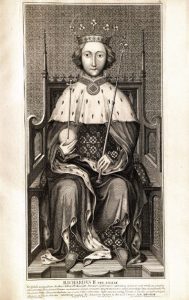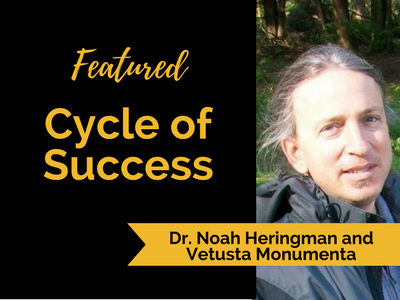Dr. Noah Heringman, the Catherine Paine Middlebush Professor of English at MU, specializes in the relationship between literature and the history of ideas in the late 18th and 19th centuries. He and his editorial team were recently awarded a three-year National Endowment for the Humanities Scholarly Editions and Translations grant to complete their digital edition of Vestusta Monumenta. Vetusta Monumenta was the first of four major publication series launched by the Society of Antiquaries of London in the eighteenth century. Seven volumes were published between 1718 and 1906.

“Kelli Hansen of Special Collections help[ed] us a great deal during the early stages of the process. She gave Amy Jones, [our first research assistant], access to the division’s Indus 9000 book scanner and taught her how to use the software needed for processing the images. After Amy graduated in 2013, two more key players came on board the project: Felicity Dykas, who is now the head of Digital Services in Ellis, and Kristen Schuster, a PhD student in the iSchool (SISLT), who became Amy’s replacement. Felicity and her team took over the scanning project and scanned the remaining five volumes of Vetusta Monumenta at a uniformly high standard of excellence and added them to the University of Missouri Digital Library using the library’s Islandora content management system. In these early years, we got excellent support from other librarians, including Mike Holland (head of the division), Anne Barker, Ann Riley, Ala Barabtarlo, and others.”
The NEH grant is part of a category of funding that supports the “preparation of editions and translations of texts that are valuable to the humanities but are inaccessible or available only in inadequate editions.” This prestigious grant will allow Dr. Heringman, and his co-project director, Dr. Crystal B. Lake of Wright State University, to publish the remaining 144 plates in volumes 1-3, will full commentary by Fall 2020.

Vetusta Monumenta provides an intimate record of the kinds of objects collectively judged to be important by a large body of scholars and amateurs over generations. In some cases, these prints are the sole record of those artifacts and monuments, so digital preservation of these prints is vital. A previous digital version exists, but is not open access and does not provide high quality images. Dr. Heringman and his team have made this present edition accessible to all, while also providing scholarly commentary and search tools in order to browse through images.
“With substantial collaboration from the Society of Antiquaries, the Association for Networking Visual Culture at USC, and a growing team of scholarly collaborators, we had published twenty-six plates with commentary, a general introduction, and extensive editorial apparatus by mid-2017, and were able to secure a three-year, 286-thousand dollar Scholarly Editions Grant from the NEH to complete the project.” The project may be viewed at vetustamonumenta.org
Cycle of Success is the idea that libraries, faculty, and students are linked; for one to truly succeed, we must all succeed. The path to success is formed by the connections between University of Missouri Libraries and faculty members, between faculty members and students, and between students and the libraries that serve them. More than just success, this is also a connection of mutual respect, support, and commitment to forward-thinking research.
If you would like to submit your own success story about how the libraries have helped your research and/or work, please use the Cycle of Success form.
Save
